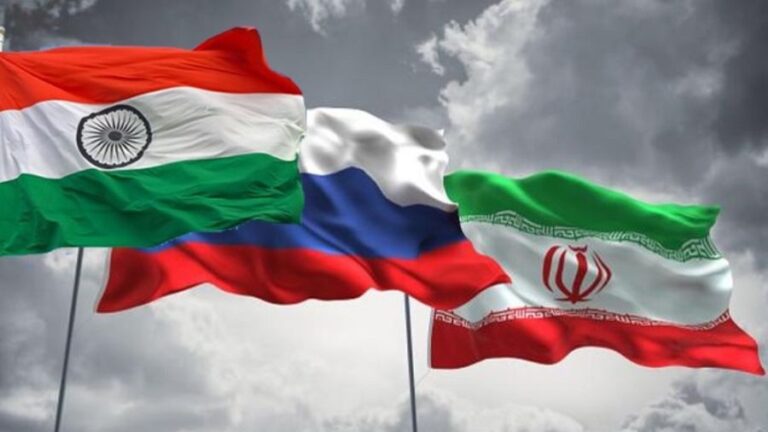Be Prepared to Live with the Taliban or the Warlords
The U.S. and the rest of the world have to be prepared to live with the winner. They had better start planning how they are going to do that.
The Fourth of July marks U.S. Independence Day and it was ironic that at the beginning of the holiday weekend, on July 2, American troops slunk out of the massive Bagram air base in Afghanistan which they had occupied for twenty years. Concurrently, President Biden had a media conference at which he was asked “Are you worried that the Afghan government might fall? I mean, we are hearing about how the Taliban is taking more and more districts.” The President’s reply was barely coherent which is disturbing on several counts, not the least being the indication that he has no idea what the future holds for Afghanistan.
His rambling response was : “Look, we were in that war for 20 years. Twenty years. And I think — I met with the Afghan government here in the White House, in the Oval. I think they have the capacity to be able to sustain the government. There are going to have to be, down the road, more negotiations, I suspect. But I am — I am concerned that they deal with the internal issues that they have to be able to generate the kind of support they need nationwide to maintain the government.” He was then asked another question about Afghanistan but cut the reporter short, saying “I want to talk about happy things, man.”
Happy things? The man is living in fantasyland. Not only has his country suffered the highest number of coronavirus deaths in the world, but a Washington Post analysis showed that “through the first five months of 2021, gunfire killed more than 8,100 people in the United States, about 54 lives lost per day” — which is even more deaths than in Afghanistan in the same period, which the New York Times calculated as 2077 (1461 soldiers and police; 616 civilians). Biden should be sitting down with his best and brightest advisers and talking about serious things — such as future U.S. policy concerning Afghanistan.
On July 5 Stars and Stripes reported that U.S. forces “left Afghanistan’s Bagram Airfield after nearly 20 years by shutting off the electricity and slipping away in the night [of 2 July] without notifying the base’s new Afghan commander, who discovered the Americans’ departure more than two hours after they left . . .” It is very difficult to believe that any nation would take such action, but Afghanistan’s designated commander of Bagram, General Mir Asadullah Kohistani, said that “we heard some rumour that the Americans had left Bagram . . . and finally by seven o’clock in the morning we understood it was confirmed that they had already left.”
This bizarre behaviour illustrated U.S. disloyalty to the Kabul government and served to further erode the morale of the tottering security forces which have been taking an increasingly severe beating in recent weeks. The flight of over 1,000 Afghan troops to neighbouring Tajikistan on July 5 was a humiliation that focused world attention on the approaching catastrophe.
In an interview broadcast on ABC News on July 4 the U.S. commander in Afghanistan, General Scott Miller, said the Taliban militants are “gaining strength” and that “we should be concerned . . . The loss of terrain is concerning.” This was probably the ultimate understatement in the past week of crisis although Miller had the grace to admit that “I don’t like leaving friends in need . . . You look at the security situation and it’s not good. The Taliban is on the move.” And there is nothing that he or the entire U.S.-Nato military alliance can do about it. They are leaving a country in a state of mayhem, and abandoning friends in need.
In October 2005 I wrote that “The insurgency in Afghanistan will continue until foreign troops leave, whenever that might be. After a while, the government in Kabul will collapse, and there will be anarchy until a brutal, ruthless, drug-rich warlord achieves power. He will rule the country as it has always been ruled by Afghans : by threats, religious ferocity, deceit, bribery, and outright savagery, when the latter can be practiced without retribution. And the latest foreign occupation will become just another memory.”
In 2005-2006 the Taliban began to recover, attracting more recruits and carrying out ever-increasing acts of violence around the country. Concurrently the warlords firmed up their positions in their own regions and continued to expand their militias. Foreign troops and aircraft surged in, and Afghanistan’s armed forces were being trained to take over security duties. But the war went on, and the U.S.-Nato military alliance led the so-called International Security Assistance Force with the mission “aimed to create the conditions whereby the Afghan government could exercise its authority throughout the country and build the capacity of the Afghan national security forces.” According to Nato this “was completed in December 2014 when the Afghans assumed full responsibility for the security of their country.”
But the security of Afghanistan continued to decline, and now all the foreigners are scurrying out of the country, leaving it in a state in which, according to the U.S. commanding general, the Taliban is “gaining strength” and “the loss of terrain is concerning.”
In Herat Province in the west of the country, abutting Iran, the Taliban captured two major border crossing points on July 8 while President Biden was making another statement about Afghanistan. Following his (again painfully disjointed) remarks he was asked “why you don’t trust the Taliban?” and answered “it’s a silly question. Do I trust the Taliban? No. But I trust the capacity of the Afghan military, who is better trained, better equipped, and more — more competent in terms of conducting war.” This is patent nonsense, as was his reply to the observation that “your own intelligence community has assessed that the Afghan government will likely collapse.” He said “that is not true. They did not — they didn’t — did not reach that conclusion” which is directly contrary to the Wall Street Journal report that “a new U.S. intelligence assessment says that the Afghan government could fall within six months of the American military departing”.
It doesn’t need the massive intelligence capability of the United States to be able to predict that the Afghan government will soon collapse and that even greater chaos will envelope the country. Biden declared he believes “the only way there’s going to be — this is now Joe Biden, not the intelligence community — the only way there’s ultimately going to be peace and security in Afghanistan is that they work out a modus vivendi with the Taliban and they make a judgment as to how they can make peace.”
Getting on with the Taliban is not easy, although there was a glimmer of hope in their meeting with some Kabul government representatives in Iran on July 7. They jointly stated that “war is not the solution to the Afghanistan problem”, but being told by Biden that he doesn’t trust them is not going to make them eager to engage in any settlement that he might wish to broker. After the present government collapses, the civil war in the country will continue, this time between the Taliban and the warlords, and it’s anyone’s guess who will come out on top.
Whatever happens, the U.S. and the rest of the world are going to have to be prepared to live with the winner. They had better start planning how they are going to do that.







